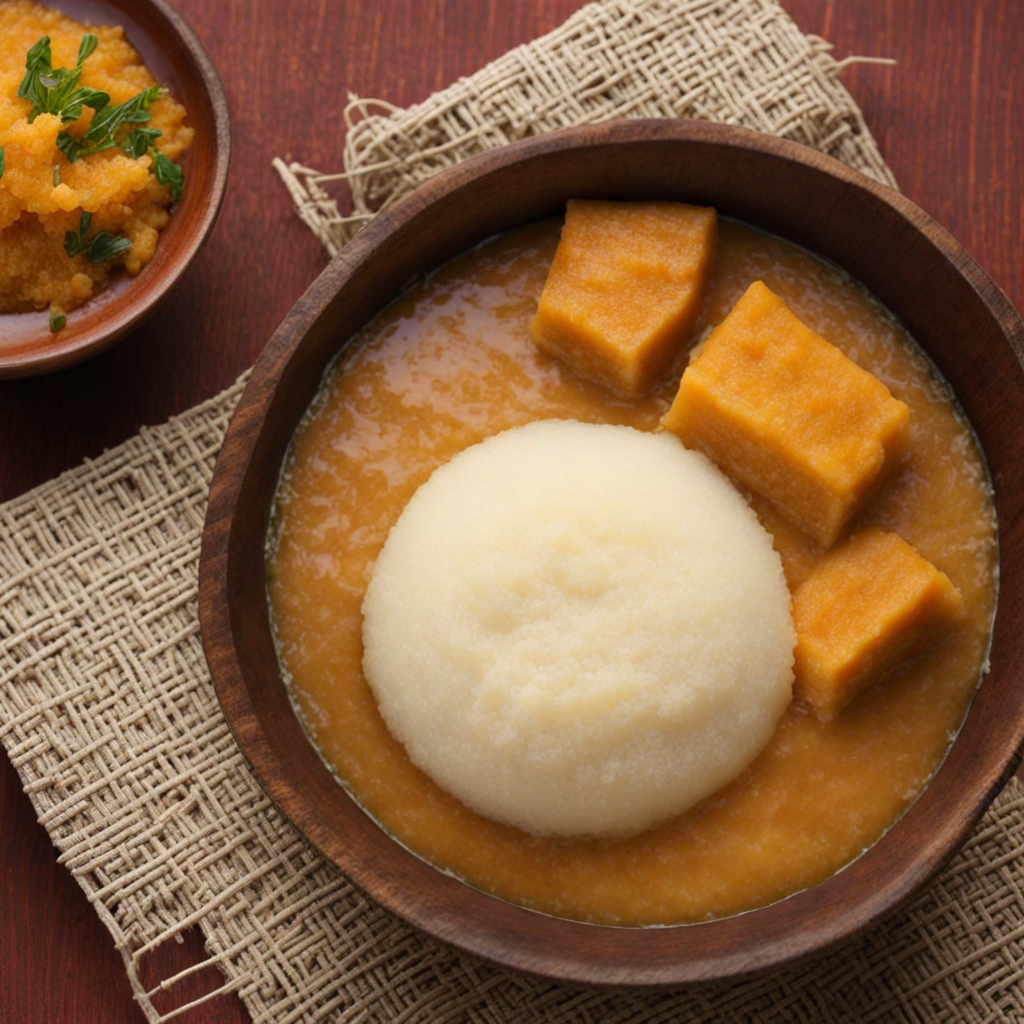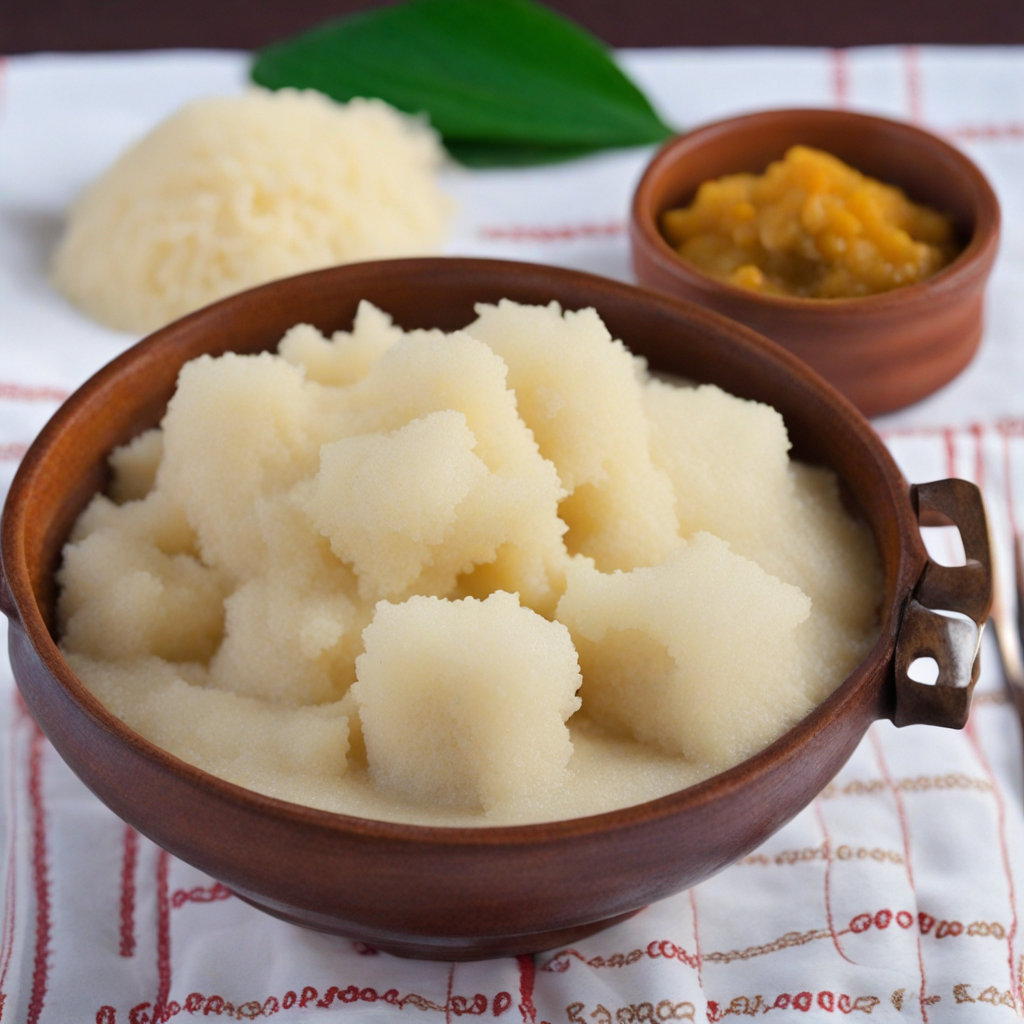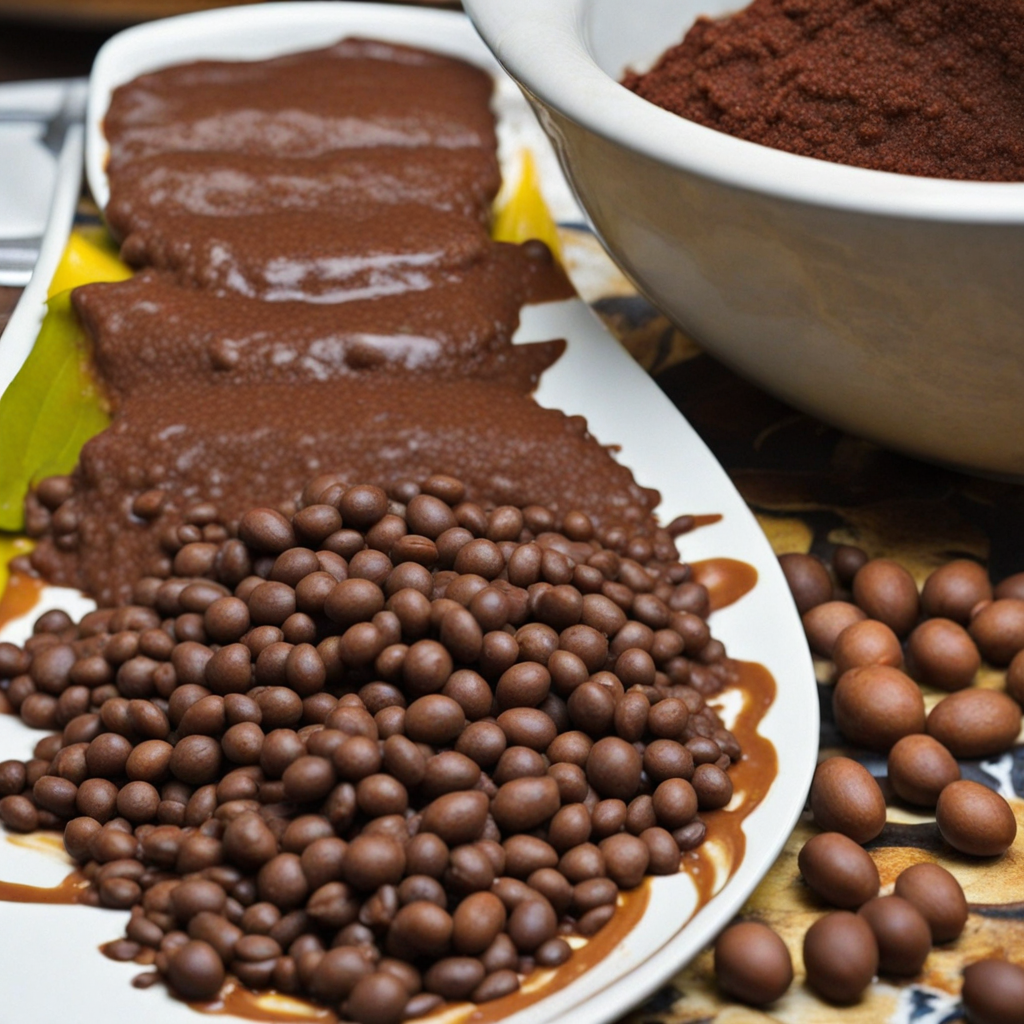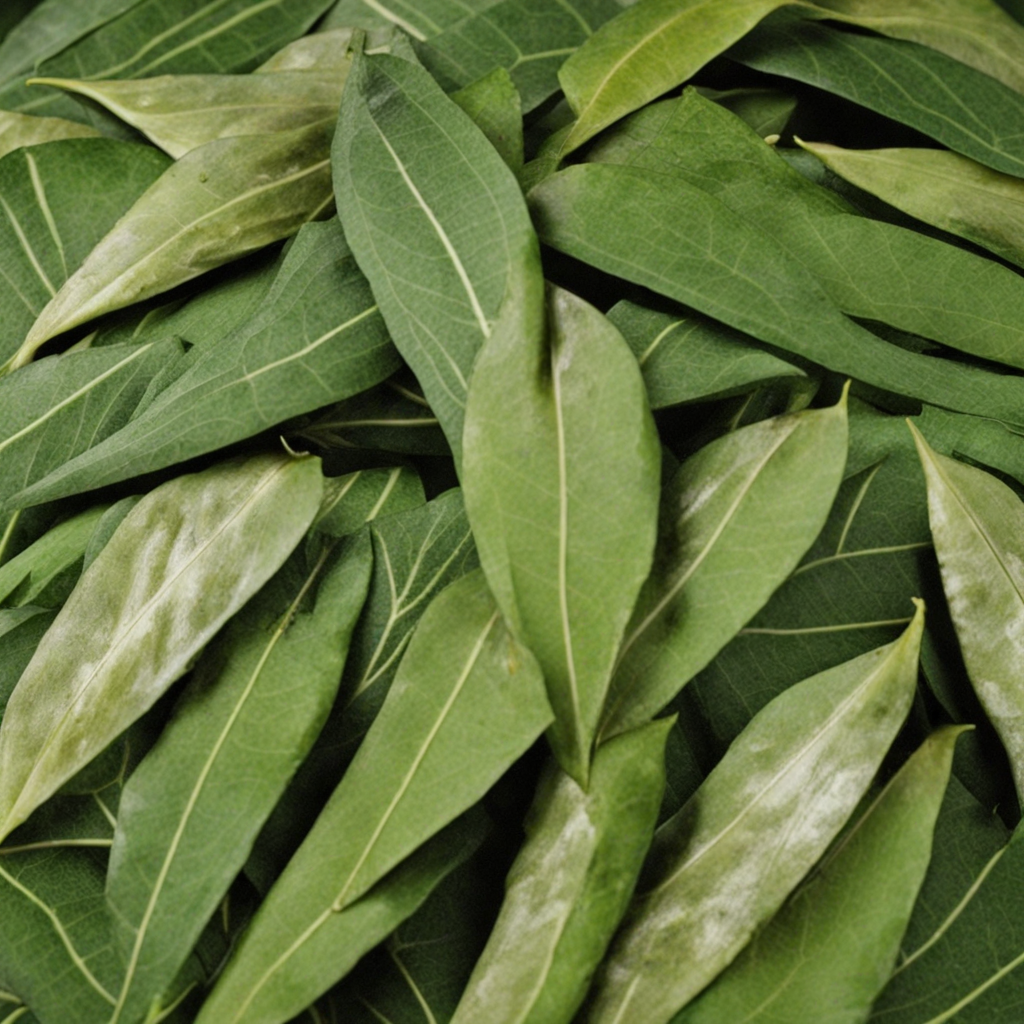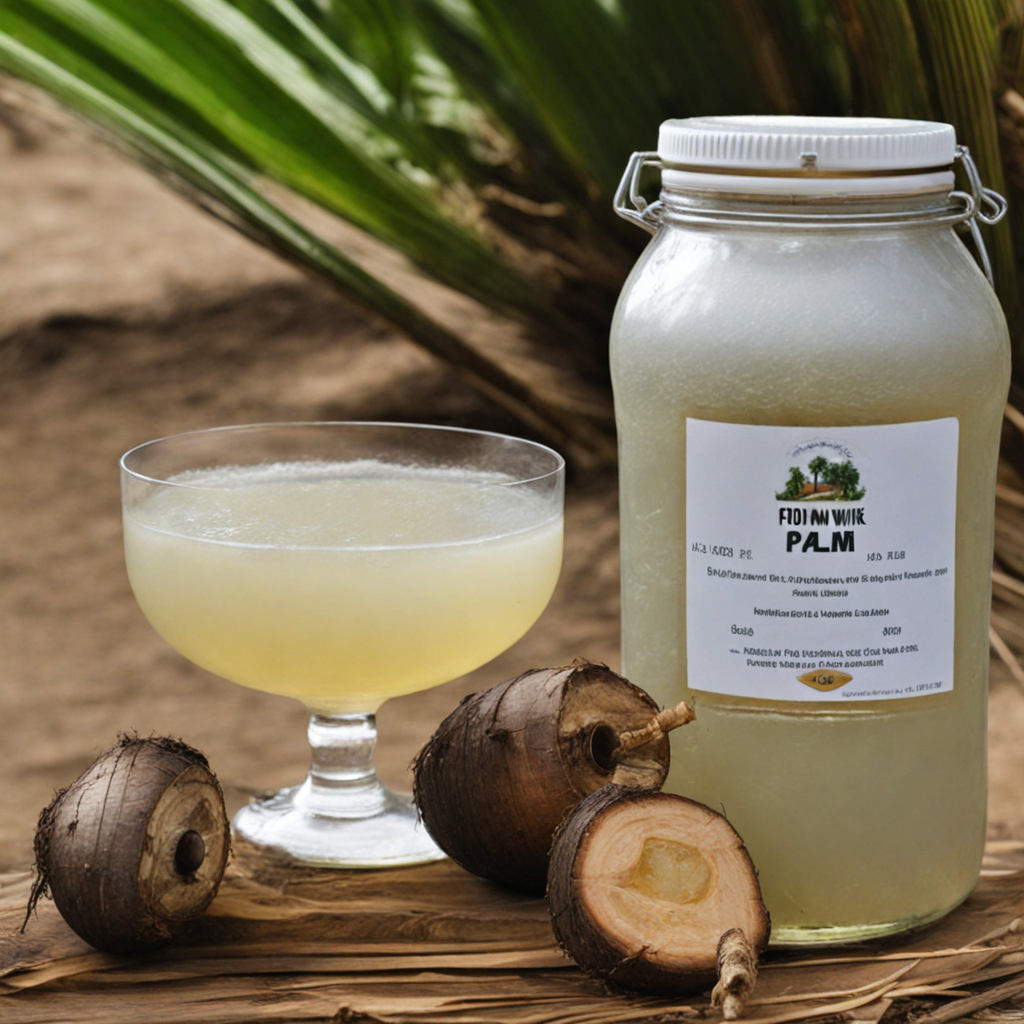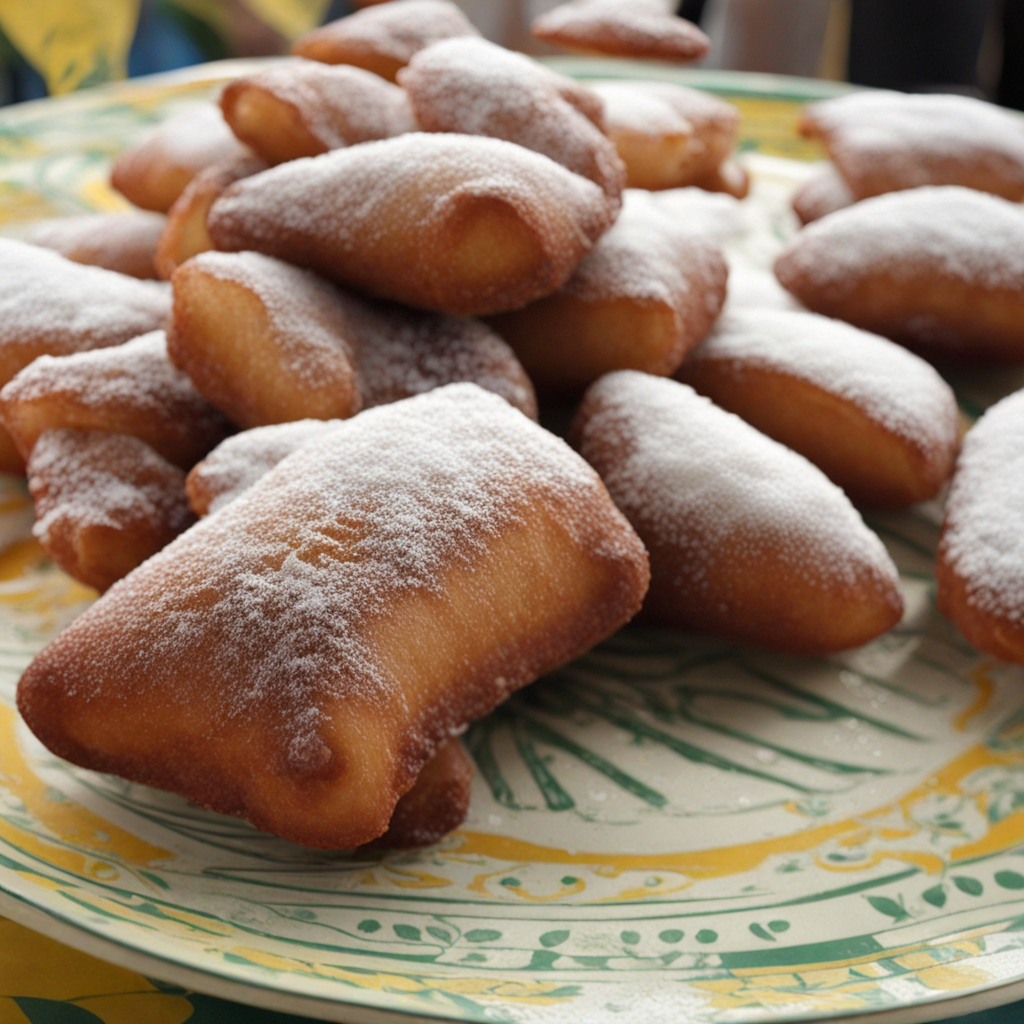Fufu
Fufu is a beloved staple in Gabonese cuisine, known for its unique texture and versatility. This dense, dough-like food is traditionally made from starchy ingredients such as cassava, plantains, or yams, which are boiled until soft and then pounded into a smooth and stretchy consistency. The process of making fufu is a labor of love, often involving the rhythmic pounding of the ingredients in a mortar, which not only transforms them into a cohesive mass but also imbues them with a distinctively chewy texture that is both satisfying and comforting. The taste of fufu is mild and slightly nutty, allowing it to serve as the perfect accompaniment to a variety of flavorful dishes, particularly rich stews and soups. In Gabon, fufu is often paired with sauces made from ingredients like palm oil, vegetables, and meats, which enhance its flavor profile while providing a hearty meal. When eating fufu, it is customary to tear off a piece with your fingers and use it to scoop up the accompanying sauce, creating a delightful balance of textures and flavors with every bite. Culturally significant, fufu is more than just food; it represents the communal aspect of dining in Gabon. Meals are typically enjoyed together, and the act of sharing fufu fosters a sense of unity among family and friends. Whether enjoyed at a festive gathering or a casual family dinner, fufu embodies the heart of Gabonese hospitality, inviting you to explore its rich culinary heritage and discover the warmth of its traditional flavors.
How It Became This Dish
Fufu, a staple food in many parts of Africa, has a particularly significant place in Gabonese cuisine. This starchy dish, often made from cassava, yams, or plantains, is renowned for its smooth, stretchy texture and its ability to complement a wide array of soups and stews. The history of fufu is not merely a tale of culinary evolution; it is deeply intertwined with the cultural, social, and economic fabric of Gabon and the broader region. Origins of Fufu The origins of fufu can be traced back to the indigenous peoples of Central and West Africa, where the practice of fermenting and cooking starchy tubers dates back thousands of years. In Gabon, fufu is traditionally made from cassava, which is a vital crop in the region. Cassava, native to South America, was brought to Africa by Portuguese traders in the 16th century. Its ability to thrive in poor soil conditions and its resilience to drought made it an ideal crop for many African countries, including Gabon. The preparation of fufu involves boiling the tubers until soft, then pounding them into a smooth, elastic dough-like consistency. This labor-intensive process is often a communal activity, reflecting the social dynamics of Gabonese society, where food preparation is a shared responsibility among family members and neighbors. Cultural Significance Fufu holds a central place in Gabonese culture, serving not only as a staple food but also as a symbol of community and tradition. In many Gabonese households, fufu is served during important ceremonies and gatherings, such as weddings, funerals, and religious celebrations. The act of preparing and sharing fufu is laden with cultural significance; it fosters a sense of belonging and reinforces family bonds. In traditional Gabonese society, food is more than sustenance; it is a means of communication and expression. Fufu is often accompanied by rich, flavorful sauces made from ingredients like peanuts, palm oil, and a variety of meats or fish. These sauces are representative of local ingredients and culinary practices, showcasing the diversity of Gabon’s natural bounty. When served, fufu is typically eaten by hand, a practice that emphasizes communal sharing and the tactile experience of food. Additionally, fufu’s texture allows it to be a perfect vehicle for absorbing the flavors of accompanying dishes. This characteristic makes it a beloved choice for many Gabonese, as it enhances the overall dining experience. The preparation and consumption of fufu also encapsulate the idea of "slow food," where the time and effort invested in making the dish are appreciated and celebrated. Development Over Time As Gabon has evolved, so too has the role and perception of fufu. While the traditional preparation methods remain cherished, globalization and urbanization have introduced new dynamics into the culinary landscape. Urban centers in Gabon, such as Libreville, have seen an influx of diverse cooking styles and influences, leading to variations in how fufu is prepared and served. In urban environments, fufu is sometimes made using instant fufu flour, a convenience food that allows for quicker preparation. This adaptation reflects broader trends in modern cooking, where time constraints and busy lifestyles influence traditional practices. However, despite these changes, many Gabonese still cherish traditional methods, and home-cooked fufu remains a beloved dish. The globalization of cuisine has also led to greater awareness and appreciation of African foods on the international stage. Gabon’s fufu, along with its accompanying sauces, has begun to gain recognition beyond its borders, establishing a niche in the global culinary scene. Chefs and food enthusiasts are increasingly exploring African cuisines, leading to a resurgence of interest in traditional dishes like fufu. This newfound attention also raises questions about cultural appropriation and the importance of authenticity in food representation. As fufu becomes more popular outside of Gabon, it is essential to honor its origins and the cultural practices associated with it. Many Gabonese chefs and home cooks are keen to share the stories behind their dishes, emphasizing the communal and familial aspects that make fufu special. Fufu in Contemporary Gabon Today, fufu remains a beloved staple in Gabon, transcending social and economic classes. It is found in the homes of the wealthy as well as in the households of the less fortunate. Street vendors and local restaurants often feature fufu on their menus, showcasing its versatility and appeal. In contemporary Gabon, there is also a renewed focus on food sustainability and the importance of traditional agricultural practices. As the world grapples with climate change and food security, the cultivation of indigenous crops like cassava is being recognized for its potential to provide sustenance while preserving biodiversity. This movement has further solidified fufu’s place in the national identity, aligning it with broader efforts to celebrate and sustain Gabon’s cultural heritage. Moreover, the rise of social media and food blogs has provided a platform for Gabonese chefs and home cooks to share their stories and recipes, fostering a sense of pride in traditional foods like fufu. These digital spaces allow for a cross-cultural exchange of culinary practices, where Gabonese fufu can inspire dishes in other parts of the world. Conclusion The history of fufu in Gabon is a rich tapestry that reflects the country’s social, cultural, and economic evolution. From its origins as a simple staple food to its status as a symbol of community and tradition, fufu continues to play an integral role in Gabonese life. As it adapts to the modern world, fufu remains a testament to the resilience and creativity of Gabonese culture. It embodies the spirit of togetherness, reminding us that food is not just about nourishment but also about connection, heritage, and identity. Whether enjoyed at a family gathering or a local eatery, fufu is more than just a dish; it is a celebration of Gabon’s rich culinary legacy.
You may like
Discover local flavors from Gabon


